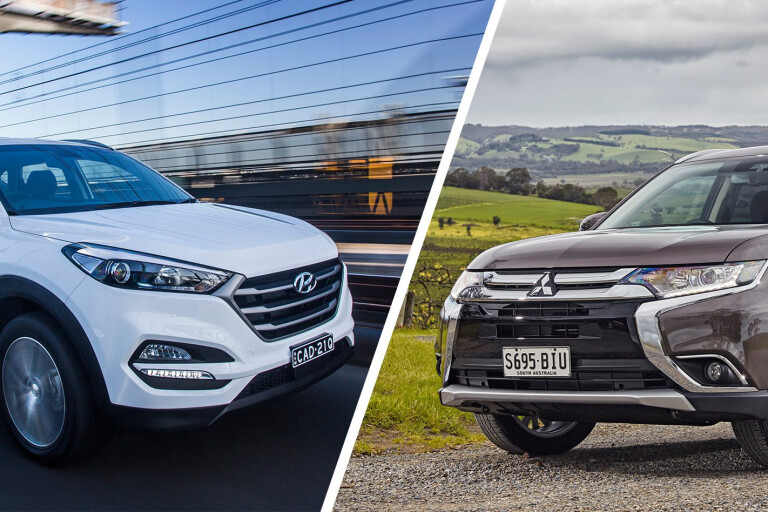
SUVs are suddenly hot property, with the jacked up, high-riding wagons now starting to consistently outsell passenger cars in Australia.
But the sports utility vehicles, as they’re known, also carry compromises when compared with a traditional passenger car – you can notice it in the way they drive, and each time you visit a fuel pump.
One of the fastest-growing segments of the new car market in 2017 is mid-size SUVs, led by the likes of the Mazda CX-5, the Toyota Kluger and the Holden Captiva.
However, there’s a host of mid-field players also worthy of attention. Generally, they cut prices by sending drive to the front wheels only, and not all four corners – a trend that has grown across almost all SUV brands.
Here, we’re looking at the $31,090 Hyundai Tucson Active X FWD, one rung up from Hyundai’s entry-level mid-size SUV offering, and the entry-level Mitsubishi Outlander LS fitted with a continuously variable automatic transmission and an optional driver-assist safety pack that brings the price to $32,000.
There’s less than the cost of a pub meal between them, but is there enough difference that one stands out ahead of the other?
PRICE AND EQUIPMENT – Winner: Draw
There’s that much competition in this segment that cars need to stay fresh to keep at the front of buyers’ shopping lists.
The Hyundai Tucson was launched in Australia in 2015 as a replacement for the ix35, and as part of running changes introduced in April 2017 it is now more sharply priced, and slightly better equipped, than before.
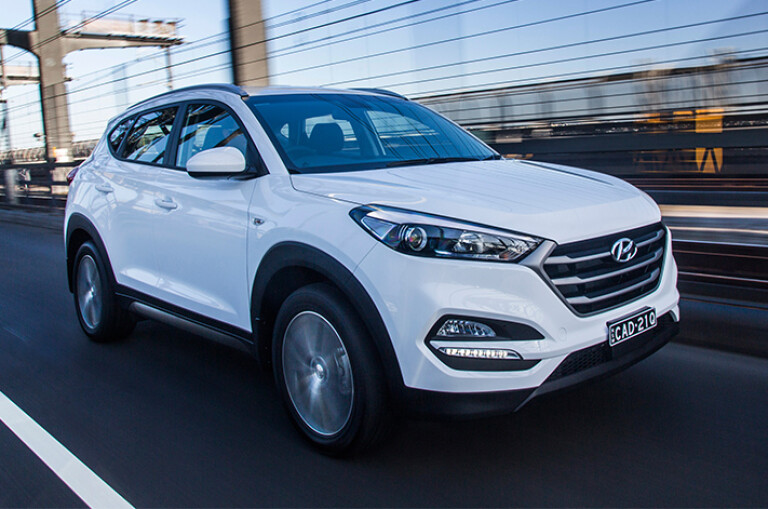
The headline for the Korean car is the addition of Apple CarPlay compatibility across the range. Because of a production switch from Korea to Europe the Tucson now gets a more fuel-efficient and powerful “GDi” 2.0-litre petrol engine.
The Mitsubishi Outlander, meanwhile, received running changes in September that added various driver assist systems, including autonomous emergency braking, as part of a safety pack rolled out as a separate model. It’s a feature only available on the most expensive Tucson.
Both cars come reasonably well equipped, although the Outlander has the added benefit of digital radio as standard (even if the sound quality is lost on the Outlander’s below-par six-speaker audio system).
Both have reversing cameras – handy for getting around the higher ride height and poor rearward visibility – leather-wrapped steering wheels and gearshifters, remote central locking, and rear parking sensors.
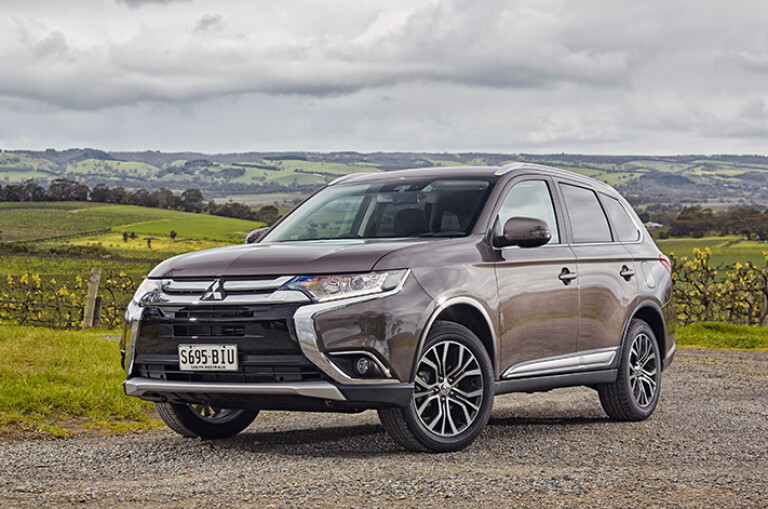
The Tucson gains a full-size spare tyre wrapped around an alloy rim, while the Outlander makes do with a temporary space-saver spare and includes dual-zone climate control air-conditioning.
There’s little to separate these two on price alone, as both are well stacked with value.
If a long warranty is important, Mitsubishi’s is five years or 100,000km, with a year of roadside assistance thrown in. Hyundai offers five years and unlimited kilometres, as well as a year of roadside assistance.
INTERIOR AND VERSATILITY – Winner: Hyundai Tucson Active X
The Hyundai’s interior feels fresh, edgy and new, and the seat trim has a utilitarian, but not unpleasant, texture. The rear seats flip forward at the lift of a lever on the side of the seat (which is a bit annoying as you have to go to both sides of the car to open up the load space entirely), and there’s plenty of room in the front and back to swallow drivers and passengers.
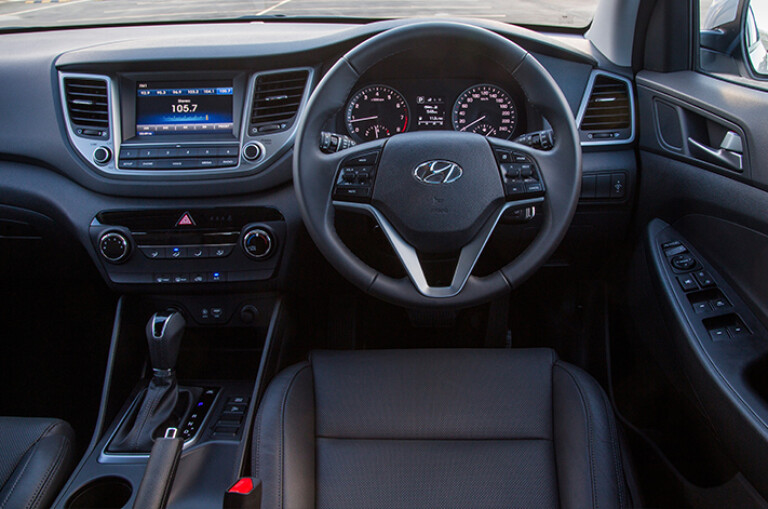
The Outlander struggles to give the same sense of quality. There are more hard plastics, the seats are a bit flatter and the contrasting inserts in the seats feel as though they’re made from textured plastic sheeting.
Both interiors offer a pair of kid-friendly USB connections, and only the Outlander features drink holders and underfloor cubby holes in the boot space – a legacy of the seven-seat layout used in more costly versions and a constant reminder that this is only the cheaper five-seater.
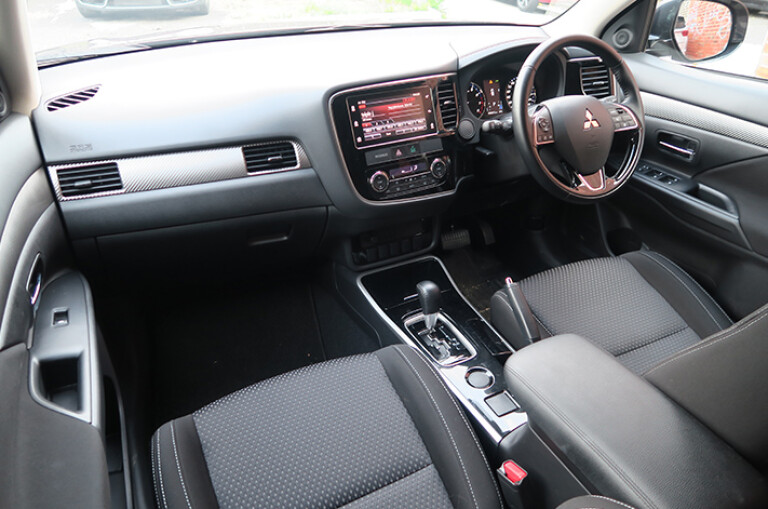
Both tailgates lift nice and clear, giving plenty of headroom beneath them. The only downside is that both are challenging for shorter owners to close.
The Tucson is the only one of this pair to feature electrically adjusting lumbar support for the driver, which you’ll notice is missing on long trips in the Outlander.
ON THE ROAD – Winner: Hyundai Tucson Active X
The most recent revisions to the Mitsubishi Outlander include suspension refinements, but they struggle to lift the Mitsubishi to the same level of ride comfort as the Hyundai.
Hyundai tunes the Tucson’s suspension specifically for Australia, so we get a ride comfort more aligned to our tastes than the one-size-fits-all-markets approach taken by Mitsubishi.

The Hyundai Tucson, then, rides quite nicely for a big, heavy SUV, and the steering feels much better than the Mitsubishi’s vague, remote system (both use electrically assisted steering boxes to help turn the wheels).
The Mitsubishi’s ride has improved, but still rides rougher with more body movement than the Tucson. On the flip side, the Outlander’s levels of cabin noise while driving, especially over coarse-chip roads, is much, much better than the Hyundai’s. If a quiet cabin is a high priority, go with the Mitsubishi.
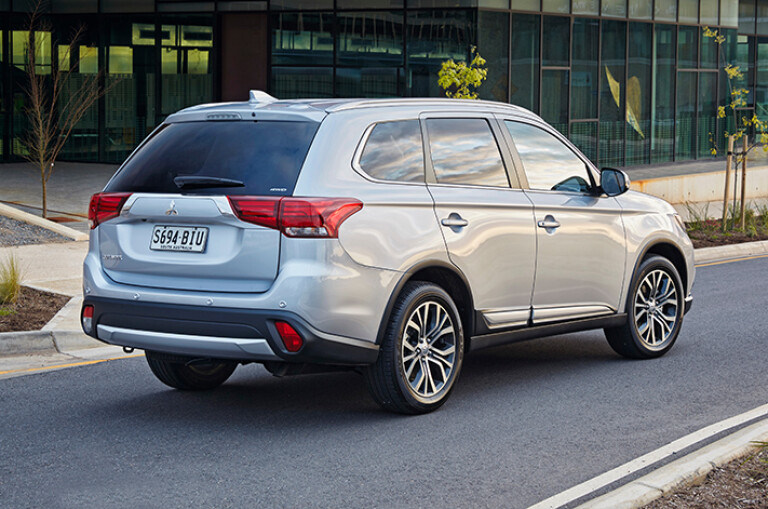
The Outlander uses a continuously variable transmission to drive the front wheels, while the Tucson uses a traditional six-speed automatic gearbox. The CVT keeps the Outlander’s gruff 2.0-litre petrol engine in its performance or economy bands, but gets buzzy when accelerating hard. The Tucson’s auto is much smoother and better-suited to city traffic, but even its engine gets coarse and shaky high in the rev range, such as when accelerating hard from traffic lights.
The Tucson’s better refinement comes with a slight fuel use penalty, though; it will use more than a litre of extra fuel per 100 kilometres than the Outlander.
VERDICT – Winner: Hyundai Tucson Active X
Just by virtue of the fact it is a much newer car, the Hyundai Tucson Active X noses ahead in this comparison. Its cabin is a lot more comfy than the Mitsubishi Outlander’s, although it does miss out on the city-friendly safety gear that stands out on the Outlander’s package list.
It’s more refined around town, though, which is where both of these cars are likely to spend most of their working lives.
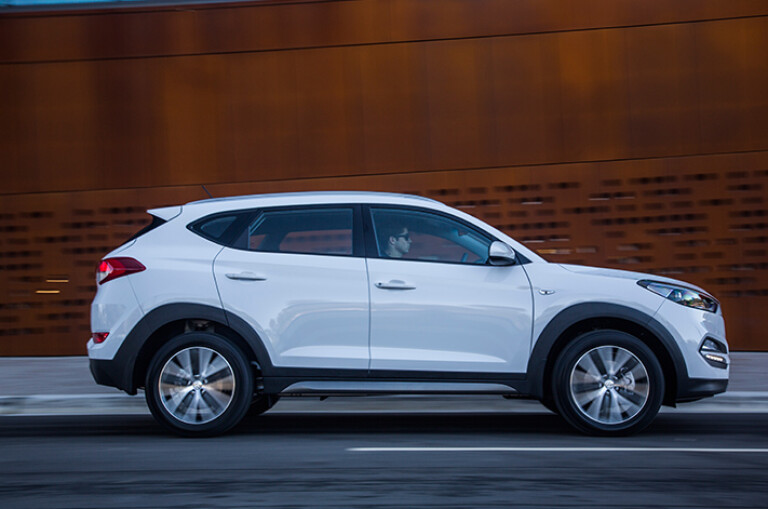
SPECIFICATIONS
Model: Hyundai Tucson Active X
Engine: 1999cc 4-cyl, dohc, 16v
Max power: 121kW @ 6200rpm
Max torque: 203Nm @ 4700rpm
Transmission: 6-speed automatic
Fuel use: 7.9L/100km
Kerb weight: 1588kg
Price: $31,090
Model: Mitsubishi Outlander LS Safety Pack
Engine: 1998cc 4-cyl, ohc, 16v
Max power: 110kW @ 6000rpm
Max torque: 190Nm @ 4200rpm
Transmission: CVT
Fuel use: 6.7L/100km
Kerb weight: 1430kg
Price: $32,000
COMMENTS